American Girl Doll Memes Have Been Everywhere Lately—and Thank Goodness for That
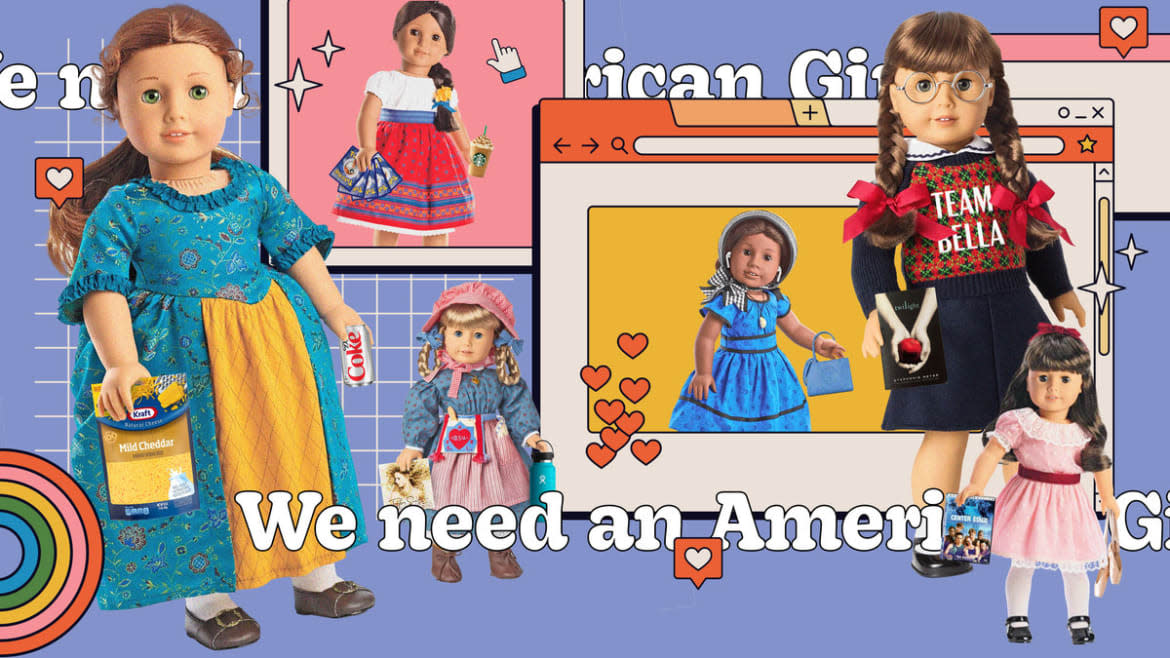
When you think of American Girl dolls, you probably have a certain image cemented in your mind: a glassy-eyed, intricately dressed piece of plastic, with slightly parted lips and articulated limbs, who’s meant to evoke a certain historical era. Perhaps you’re imagining Samantha Parkington, the Edwardian-era orphan who sported an afternoon tea dress, or Molly McIntire, known for her bookish looks of glasses and bow-tied braids.
If you were lucky enough to own one of these dolls as a kid—these days they cost $115, minimum—you probably think of Molly, Samantha, and the rest of the American Girls fondly. But did you ever wish that you also had an American Girl doll “who got so high on edibles she called 911”? Or one “who is obsessed with Twilight?”
Mattel, which produces the collection, doesn’t have these ladies for sale; the average American Girl doll continues to be an average American girl. But thanks to a series of increasingly popular internet meme accounts, the iconic brand is receiving a makeover as a series of quirky, pop culture-obsessed, unfiltered, and anxious characters—very relatable to the adult women who owned the dolls as children and now share the memes online.
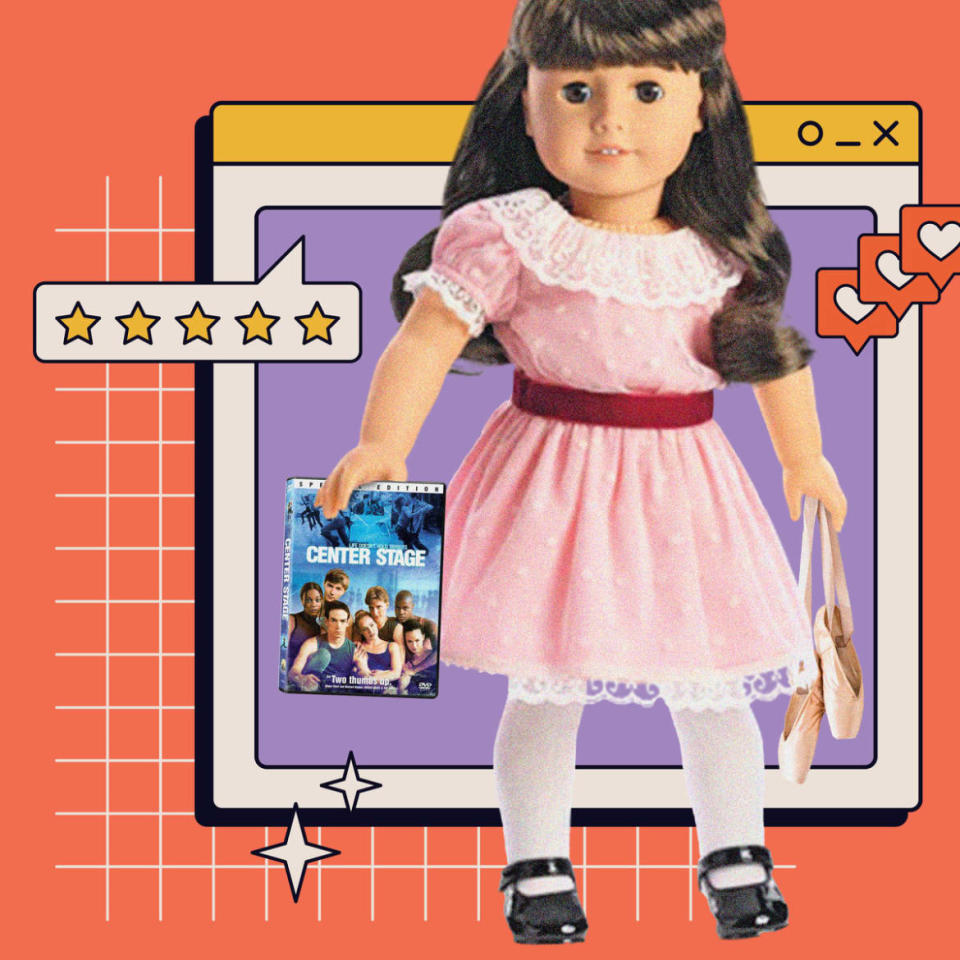
These memes have been overtaking social media feeds, driven by accounts with doll-inspired names like @klit.klitteridge, @juuliealbright, and @hellicity_merriman. But what initially started on TikTok and Instagram with fans and American Girl doll-focused content creators has spread like wildfire to Twitter with a plethora of users—who were either once steeped in American Girl Doll culture or just wanted to join in on the fun—cleverly inventing their own imaginary American Girl doll scenarios.
People want an American Girl doll “who drinks a Diet Coke at 8 a.m,” or one “who memorized every dance in Center Stage in her pointe shoes.” Someone’s also got a request in for “an American girl doll who accidentally withdrawals from Zoloft and gets the brain zaps.” And these examples barely scratch the surface.
These memes get thousands, sometimes hundreds of thousands, of likes on Twitter and Instagram; they’ve attracted widespread media attention; brands have made their own American Girl doll memes to sell products. New York City’s American Girl Doll Cafe, where girls are encouraged to bring their dolls to have fake tea parties, has even become a brunch hotspot for full-on adults. Olivia Rodrigo even visited when she was in town during her recent tour. American Girl dolls have indisputably been creeping into our collective subconscious, and there’s no sign of stopping.
We need an American Girl doll who is an insider and knows the tea about what’s going on at Funny Girl on Broadway pic.twitter.com/IcDhgKN5Zk
— Austin (@austinkreitler) July 11, 2022
we need an american girl doll who is never gonna financially recover from this pic.twitter.com/nndclbadBN
— sweatpants cher🔸 (@House_Feminist) July 10, 2022
we need an american girl doll who had a glass bowl thrown at her by lea michele because she was replacing her in ragtime. pic.twitter.com/XVVI2UWJH3
— Emily Kranking (@emilykranking) July 11, 2022
we need an american girl doll who bought a nick jonas diabetes necklace
— victoria edel (@victoriaedel) July 11, 2022
We need an American Girl doll whose class consciousness was activated by not being able to afford an American Girl doll.
— Fly Robyn Fly (@flyestrobynfly) July 6, 2022
The trend is one of pure creative chaos, a novel and timely way to embrace nostalgia. But in its simplest form, the American Girl Doll memes are just a satisfying way for millennials, in particular, to rewrite the history of the dolls and make them more resonant with the generation that grew up with them.
It helps that the creators of the most popular accounts are young women who themselves grew up as fans of the American Girl dolls. American Girl dolls have always been a special interest for Eliza, 20. Growing up as a young girl with autism, she admired and collected the dolls. She eventually joined the American Girl Instagram community, where she connected with fellow fans her age. She eventually created a meme Instagram? account for their inside jokes, now known as @juuliealbright (named after the hippie-ish American Girl character). The @juuliealbright account has been credited with helping to popularize the trend of pitching hyper-specific American Girl dolls, with Eliza’s memes starting to gain traction earlier this year.
What she started one year ago has now evolved into a “micro-community,” Eliza says, where she posts memes of American Girl dolls that have a very “sad girl” Tumblr-esque captions. On the @juuliealbright Instagram page, you’ll find an American Girl doll quoting Lana Del Rey lyrics or saying that “bpd is an adventure.”
What Eliza likes best about the community and its growth is the sense of camaraderie she gets from it. "When you would go to the American Girl store as a kid, you'd see a bunch of other girls and people around you that made the same doll as you,” says Eliza. “It was like a bonding experience in that store, and I kind of feel like the store has taken over Instagram in a different medium now.”
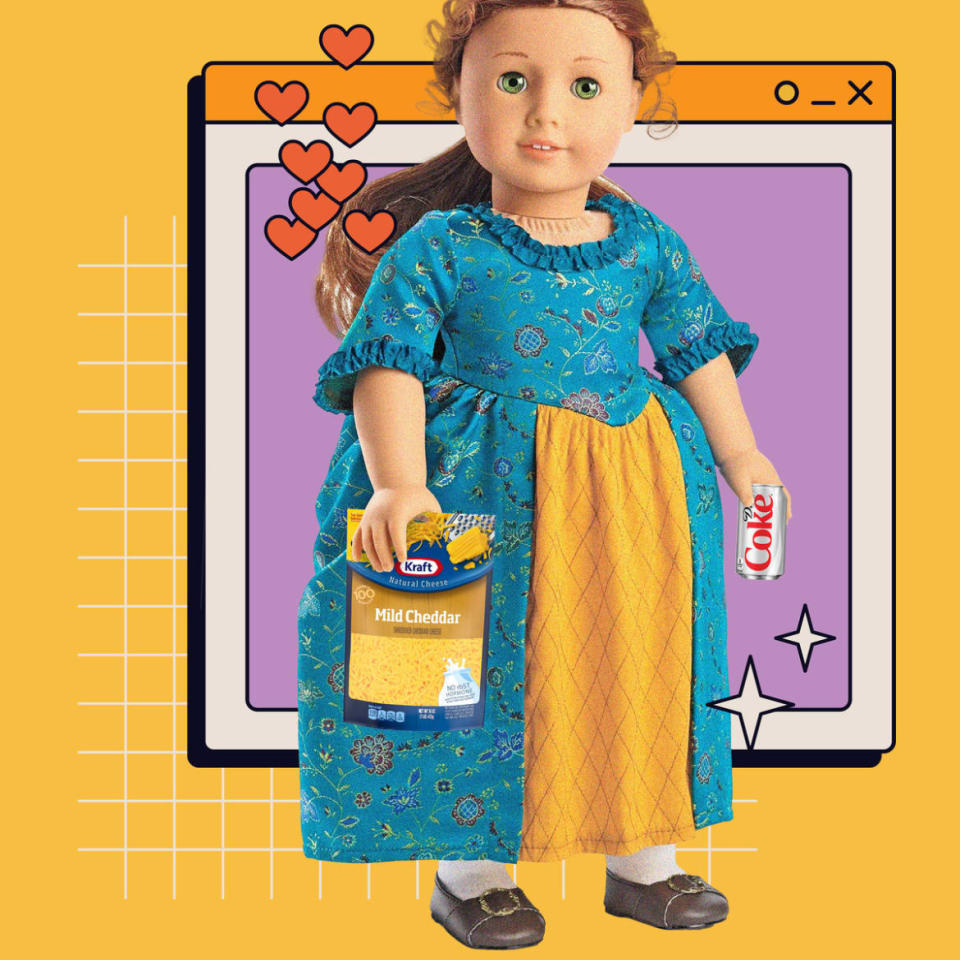
Barrett’s entrance into American Girl memedom was the direct result of that kind of bonding. When , met her best friend (who asked to be referred to as “C”) at a job five years ago, they bonded over sending each other personality quizzes—their favorite one of which featured the American Girl characters. They loved that particular quiz so much, they’d make everyone they know take it, including new hires, new friends, and even guys they dated. About four months ago, when they saw that American Girl doll memes had started surfacing across their social media feeds, they decided to start their Instagram account @hellicity_merriman on a whim.
The @hellicity_merriman Instagram account now has over 158,000 followers and posts memes with captions like “We need an American Girl doll who eats cheese out of the bag with her hand” and “We need an American Girl doll who got famous on Tumblr in 2012. Generally, these memes feature a random American Girl doll—either historic or modern—photoshopped onto a blank or quasi-related backdrop with specific text over it. Thus far, Barrett says, their followers are largely women between the ages of 18 to 40, who like and repost the images in droves. “It's a brand that they are deeply familiar with,” she says of the account’s specific demographic. “The hilarity and the relatability of seeing these characters that they grew up with in situations that are more relatable to their problems as an adult woman in 2022 [is] really what strikes a chord for people.”
Before starting the @klit.klitteridge Instagram and Twitter accounts nearly a year ago, Lydia, 24, had a long history of making internet memes, including a Twitter account that spotlighted Rand Paul’s sartorial choices, a Tumblr parody account dedicated to presidential penises and a more general TikTok meme account called @meghanmccainofficial. But her attempts to break big on TikTok weren’t working—until she joked about the pipeline from American Girl doll lover to radical leftist. That’s when she had the idea to start a meme account specifically leaning into American Girl doll-themed jokes.
“I started making [them in] what I considered to be “shit-posting style,” Lydia says, of her meme-making ethos. She’d often make politically charged posts, for instance, like an American Girl doll carrying a book trolling President Biden with the caption, “Cancel them loans, Joseph!” Sometimes she’d go simpler, pairing a tousled-hair American Girl doll with an existential lyric from Katy Perry’s “Firework:” Do you ever feel like a plastic bag?” “I was really copying, in my head at the time, @onadownwardspiral- @susanfrompta-type imagery and language,” Lydia says.
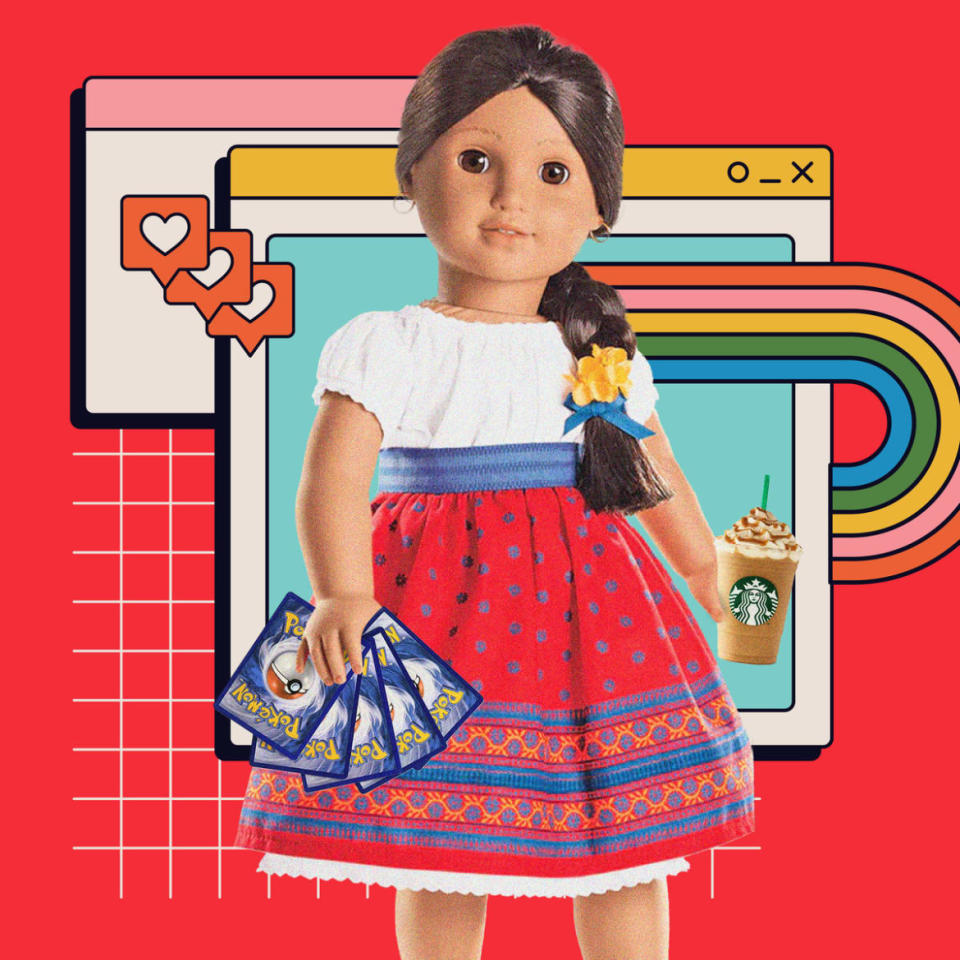
With Y2K nostalgia taking over music, fashion, and pop culture, it’s not surprising that there’s an obsession with American Girl Doll memes right now; American Girl was at its peak popularity at the turn of the millennium. While the brand started in 1986, that era ushered in a handful of new, memorable dolls, including Lydia’s account namesake Kit Kittredge, a twee, Great Depression-era doll and Kaya, a Native American, horse-loving doll from the 1700s.
It was also around that time that the first American Girl Place opened in Chicago, which added a real-life community element to the brand, where fans could connect and shop in-store. (They were encouraged to bring their dolls along with them, of course.) By 2004, the American Girl brand had entered the movie business as well, first with a film based on Samantha in 2004’s Samantha: An American Girl Holiday. Eventually, even pop star Olivia Rodrigo would even star in one; she was in 2015’s An American Girl: Grace Stirs Up Success.
Lydia specifically tapped into her own 2000s nostalgia when creating @klit.klitteridge. “When I think about my American Girl doll experience, I think about the time when I was in elementary school, which was roughly 2000 to 2008… and this is the era of American Girl dolls that I really focus on with my content,” Lydia explains. These are the dolls released between Felicity and Julie, who debuted in 2007. “She [Julie] was the last doll I got for Christmas,” Lydia recalls. To her, that era of American Girl was the best: It had an abundance of dolls and products, including Historical Best Friend dolls, online flash games, and the beginning of the Smart Girls Guides series, a collection of tween advice books from the brand.
Central to the American Girl doll experience—and today’s meme content—are the specific characters within the collection. Thanks to clothes and accessories, the dolls embody certain character archetypes. There are particular American Girl doll characters, whose stories are from different eras and different backgrounds, that people have remembered fondly over the years. After all, American Girl was a brand where young women could pick and choose their favorite dolls and products based on their own personalities.
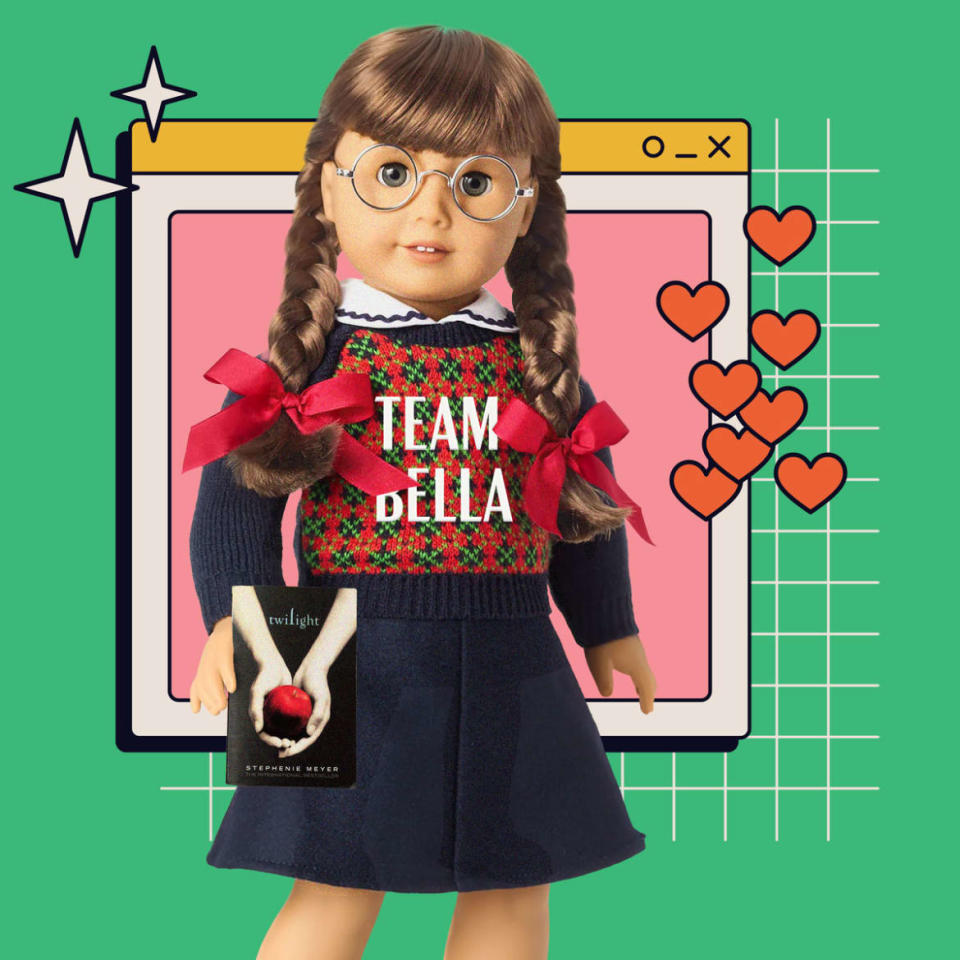
It makes sense that decades later, if you owned particular American Girl dolls or knew their stories, you would appreciate the references to specific characters. “I just say like, ‘We've all been bullied by a girl who had Samantha,’ or, ‘A kid named Molly might have eaten bugs,’ and you laugh because it's true,” Lydia explains. (Full disclosure: This writer owned a Molly doll, and she did, indeed, laugh.)
Another part of the memes’ appeal might have something to do with how our collective sense of humor has shifted thanks to the pandemic. “Maybe it's funny to think about a doll whose entire story was set in like 1865 to be really worried about like climate change in student loan debt in 2022,” she explains. “It's something that they can project some feelings on in a bleak, ironic way, and it does make people at least laugh about their problems.”
To that point, some of the American Girl characters millennials grew up with had backstories that haven’t always aged well. Part of 11-year-old colonialist Felicity Merriman’s story was that she grew up in the pre-Revolutionary War era with her slave-owning family, and her grandfather owned a plantation. Felicity’s stories never critiqued her family structure or presented it as a problem, which in itself is a huge problem.
Meanwhile, Addy Walker, American Girl’s first Black doll, was a 9-year-old girl born into slavery who eventually escapes, and for years, her story was the only one to represent young Black girls for the brand. “All of [Addy’s] character books, if you reread them now, it’s playing into an ‘angry Black girl’ trope,” says Barrett. “That’s really gross to look at, especially in 2022, and be able to realize that the things that you absorb as a child are deeply problematic.”
While American Girl dolls aimed to provide historical fiction and champion young girls, the brand also fell short of truly representing them. In a way, updating the stories of these dolls through memes is a reclamation of their narratives. “There's a big overlap, I think, between the people who create this content young, politically aware people, so I think a lot of [the memes] delve into how identity politics shape these characters,” says Barrett.
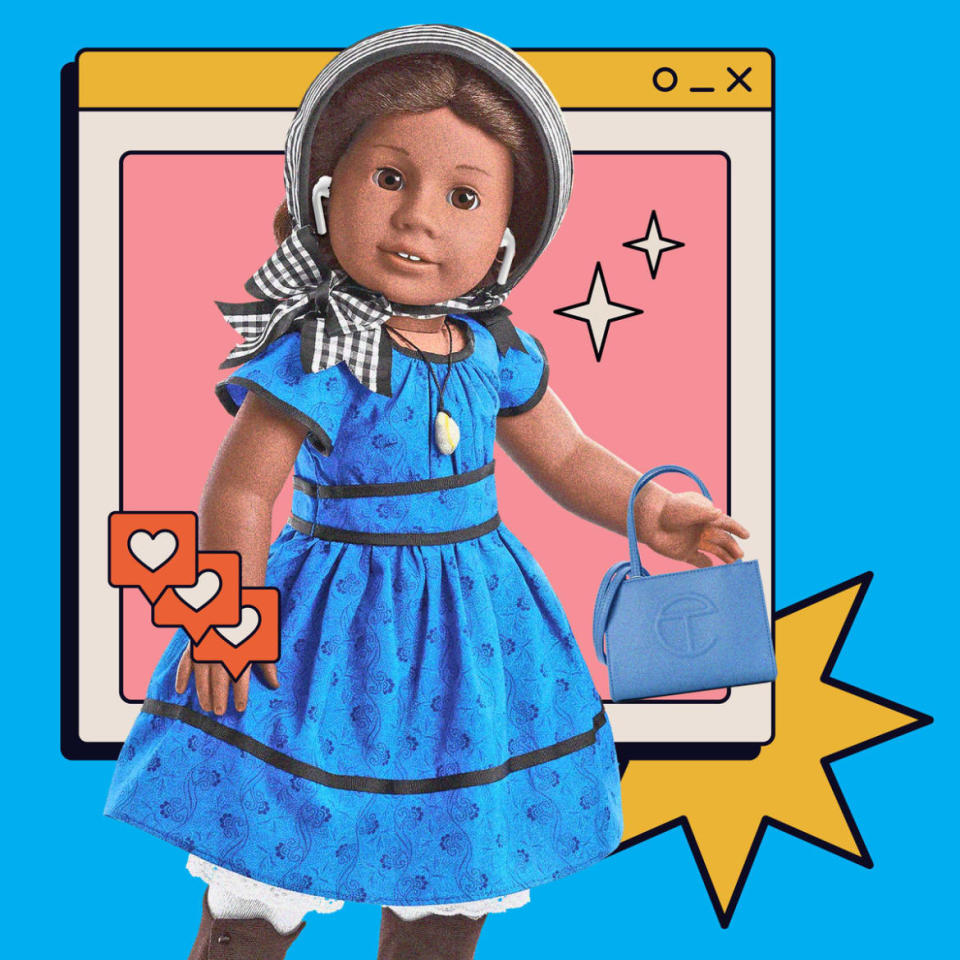
In a larger sense, the darkness of the American Girl doll memes—references to mental illness, medications, and political horrors abound—may represent the culmination of where we are in our socio-political climate. A combination of the pandemic, the Trump presidency, the attacks on Black, brown, and indigenous bodies, and the continued rights being stripped away have left people—us— unwell. “Zoomers have this very dark edge on their comedy and are blatantly talking about mental health issues,” explains Lydia. “I think you see that reflected in the American Girl doll memes.”
We are searching for escapism in the opulence of Real Housewives or home renovation shows more than ever. We are clinging to catharsis in nostalgia while dealing with the chaos of our own psyches and the outside world. So if rage-sharing or reposting unhinged memes about an American Girl doll taking Xanax or reciting lyrics to Taylor Swift’s “All Too Well” makes us laugh or relieves some pain—then great. If it also helps us modernize them with multi-dimensional storytelling? Even better.
“Even if it doesn’t mean you’re gonna go out and buy a $110 doll, you can look back at a meme of something that you really loved as a child and it makes you feel like healing your inner child,” Eliza explains.
Only time will tell. But if late-stage capitalism has anything to say about it—and has been sharing these memes with abandon like the rest of us—we’ll probably be able to buy American Girl dolls who survived COVID and the fall of democracy by Christmas next year.
Get the Daily Beast's biggest scoops and scandals delivered right to your inbox. Sign up now.
Stay informed and gain unlimited access to the Daily Beast's unmatched reporting. Subscribe now.

